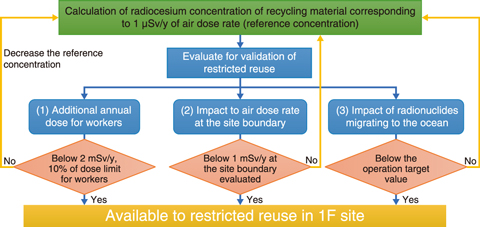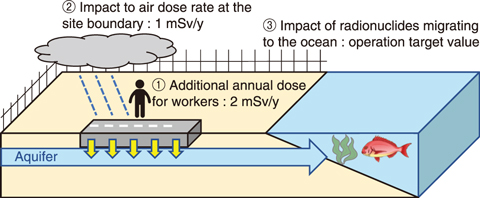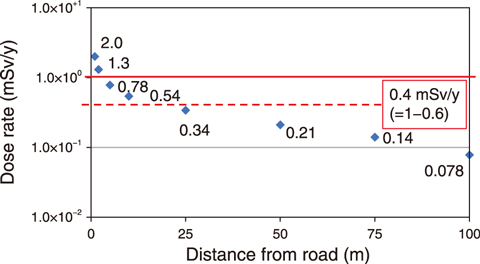
Fig.1-22 Safety assessment of reuse methodology

Fig.1-23 Conceptual diagram for the evaluation of reference radiocesium concentration in restricted reuse as road material

Fig.1-24 Dose rate corresponding to the distance from the site boundary to the road made of recycled material
A large amount of contaminated rubble from the accident and subsequent activities toward the decommissioning is stored at the TEPCO's Fukushima Daiichi NPS (1F) site. Of the rubble stored outdoors with a surface dosage rate of under 0.1 mSv/h, rubble with a dose rate of less than 5 μSv/h will be recycled and applied in a restricted reuse within the 1F site. Currently, the 1F site is controlled as the existing exposure situation, where had shifted from an emergency exposure situation, and exposure doses of all persons in the 1F site are controlled. There is no precedent for establishing reference values such as dose and/or concentration for reuse of contaminated rubble under the existing exposure situation.
Therefore, a basic approach to estimate the reference radiocesium concentration for a restricted reuse of contaminated rubbles within the 1F site was designed; the used safety assessment of this approach is shown in Fig.1-22. Material was reused when the radiocesium concentration did not significantly increase the air dose rate in the 1F site to reduce any additional exposure dose to workers. The increased dose rate by restricted reuse was capped at 1 μSv/h, which is the minimum dose rate at the 1F site measured by ionization chamber detectors. In addition, in order to validate the reference concentration, we confirm the reuse does not affect the current radiation management in 1F site by three items described below, ①the dose to workers should not exceed 10% of the dose limit,②the increased annual dose by restricted reuse evaluated at the 1F site boundary should not exceed 1 mSv/y,③ the radionuclide concentration of groundwater migrating from the recycled material should not exceed the operation target value (1 Bq/L for 134Cs and 137Cs, 5 Bq/L for all β)(Fig.1-23). When the annual dose at the 1F site boundary and radionuclides concentration in groundwater cannot clear the current radiation management, the distance from the position of reuse to the boundary not to exceed the value of the current radiation management can also be evaluated. Target nuclides in these validations include radiocesium, 90Sr, which is contained in the rubble with 1% concentration against radiocesium, and 14C, which was contained above the clearance level.
The reference concentration was thus calculated and verified. Road material and building bases were considered for recyclability in 1F. It is shown that the additional dose for worker not exceed 10% of dose limit by reusing for both purposes with reference concentrations. And, we evaluated the distance from the position of reuse to the boundary not to exceed the value of the current radiation management by reusing. (Fig.1-24).
This study was partly sponsored by the Secretariat of the Nuclear Regulation Authority (NRA), Japan.